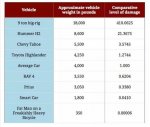I can take an airplane today from Jacksonville to Miami, about 400 miles. It takes an hour. Whether its 100 or 1000 miles, a plane simply flies faster.
Trains may be faster to get in and out of, but its more than lost in the slower speed and the stops. And thats before people are even really using them. Ultimately its the cost of building. Two airports and a plane are much cheaper than thousands of miles of land. Its just a out of date technology that came and went.
It does not take you 1 hour to travel from Jacksonville to Miami by plane.
1. You have to drive to the airport which is going to be located away from the city center of town.
2. You have to go through TSA checkpoints.
3. You have to wait to board the flight.
4. The flight you board has to wait on the tarmac until its approved to takeoff.
5. You fly to Miami and wait on the tarmac until you get a gate.
6. You exit the gate into the terminal and then have to travel through the airport, a very large one in this case, until you can get to the curb to get an uber, public transport or a rental.
Total travel time from your home to Miami is going to be about 4 hours even though the flight itself is just a little over an hour.
Compare this to how high speed trains operate:
1. You drive to the train station that is almost always centrally located.
2. You go through security, but it takes only a couple of minutes and is much faster than airport security.
3. Even a large train station is much smaller than a typical airport in terms of how fare you have to walk through it. You can be from the parking lot through security and to the platform in 15 minutes or less.
4. The train boards in less than 5 minutes.
6. With stops, on a modern high speed train, the travel time from Jacksonville to Miami would be about 2 hours.
7. Your train arrives in Miami, you are off it in less than 5 minutes and to the curb to get an uber or rental in just a few minutes at most.
Your total travel time, 3 hours or less.
I know this because I have taken domestic flights and high speed trains in China many times, and you have to be traveling more than 500 miles before flying is faster.

